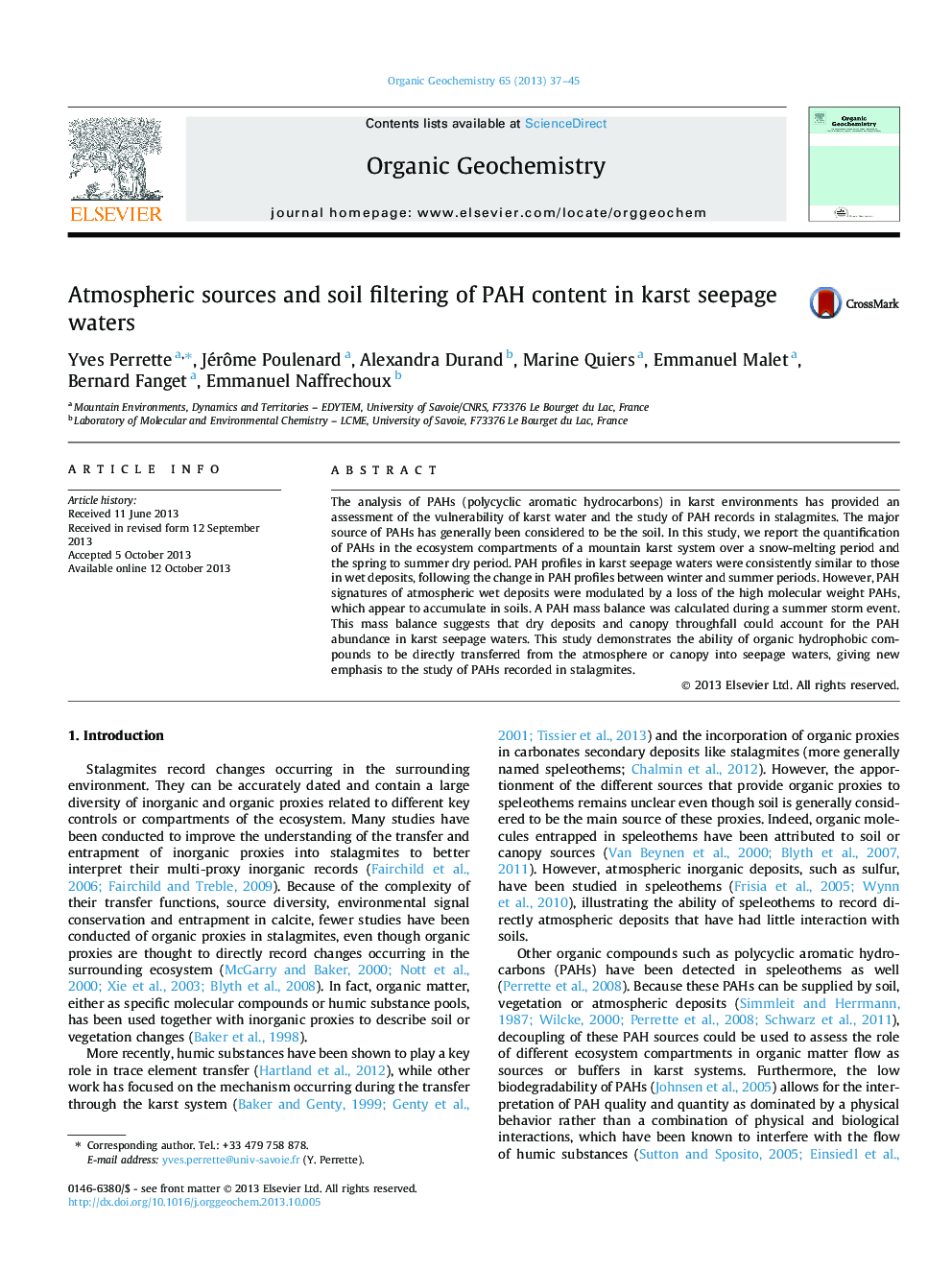| Article ID | Journal | Published Year | Pages | File Type |
|---|---|---|---|---|
| 5162533 | Organic Geochemistry | 2013 | 9 Pages |
Abstract
The analysis of PAHs (polycyclic aromatic hydrocarbons) in karst environments has provided an assessment of the vulnerability of karst water and the study of PAH records in stalagmites. The major source of PAHs has generally been considered to be the soil. In this study, we report the quantification of PAHs in the ecosystem compartments of a mountain karst system over a snow-melting period and the spring to summer dry period. PAH profiles in karst seepage waters were consistently similar to those in wet deposits, following the change in PAH profiles between winter and summer periods. However, PAH signatures of atmospheric wet deposits were modulated by a loss of the high molecular weight PAHs, which appear to accumulate in soils. A PAH mass balance was calculated during a summer storm event. This mass balance suggests that dry deposits and canopy throughfall could account for the PAH abundance in karst seepage waters. This study demonstrates the ability of organic hydrophobic compounds to be directly transferred from the atmosphere or canopy into seepage waters, giving new emphasis to the study of PAHs recorded in stalagmites.
Related Topics
Physical Sciences and Engineering
Chemistry
Organic Chemistry
Authors
Yves Perrette, Jérôme Poulenard, Alexandra Durand, Marine Quiers, Emmanuel Malet, Bernard Fanget, Emmanuel Naffrechoux,
